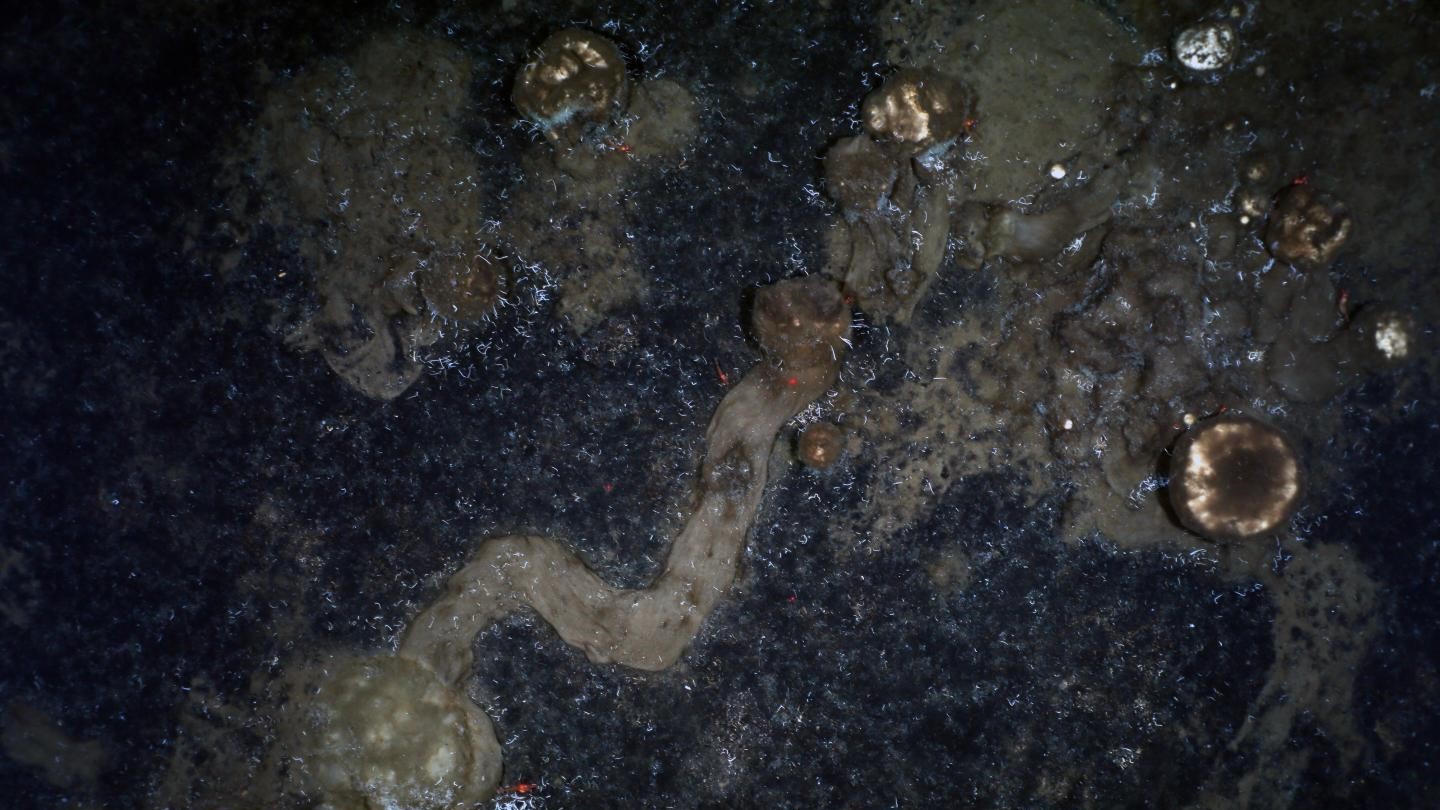Arctic sponges crawl around the seafloor and leave bizarre brown trails to prove it
It is the first evidence that sponges can move in this way.

Scientists have recorded the first evidence of deep-sea sponges crawling around on the seafloor, after snapping photos of bizarre brown tracks left behind by the surprisingly mobile creatures in the Arctic.
Sponges are one of the oldest animal groups found on Earth, dating back around 600 million years to the Precambrian period. Scientists had long assumed that these colonial animals — which form dense, yet porous, skeletons on the seafloor — were sedentary and incapable of moving around, although some encrusting sponges that grow around rocks achieve limited mobility by remodeling their bodies in a sliding fashion.
In 2016, a group of researchers onboard the icebreaker research vessel Polarstern used towed cameras to capture video footage of the seafloor at Langseth Ridge — a poorly studied region of the Arctic Ocean that's permanently covered in sea ice — at a depth of between 2,300 and 3,300 feet (700 to 1,000 meters). There, they discovered one of the most densely populated groups of sponges ever seen. They also spotted several unusual brown trails following behind the invertebrates, suggesting that these Arctic sponges are capable of crawling around the seafloor, the team reported in a new research paper.
Related: The 12 weirdest animal discoveries
"The trails are made up of the spicules, or spines, which the sponge can grow," co-author Autun Purser, a deep-sea ecologist at the Alfred Wegener Institute at the Helmholtz Center for Polar and Marine Research in Germany, told Live Science. "The sponge seems to expand along these spines, then contract to the new, moved position. During this process, some spines break off, forming the trails."
The researchers suspect that some other sponge species crawl around the seafloor, too.

Secretive sponges
Three sponge species — Geodia parva, Geodia hentscheli and Stelletta rhaphidophora — were found at Langseth Ridge, making it the most northerly place sponges have ever been found, Purser said. "Even here, under permanent ice, a dense sponge community can exist."
Sign up for the Live Science daily newsletter now
Get the world’s most fascinating discoveries delivered straight to your inbox.
Despite having some suspicion that they might find sponges in the area, Purser said, they "did not expect so many [sponges] and certainly not that they would show indications of mobility."
The spicule trails were a few inches tall and several feet long. They showed not only that the colonial invertebrates could crawl around the seafloor but also that they could change direction while moving, and even travel uphill. The trails appeared in nearly 70% of the seafloor images that contained living sponges, suggesting that the trails — and thus, the movement — were common, the researchers said in a statement.
The team suspects that the sponges could be moving around to search for optimal feeding spots — sponges are filter-feeding animals that consume tiny pieces of organic matter suspended in the water column — because of a lack of food in the permanently ice-covered Arctic waters. However, the juvenile sponges were more likely to leave trails, suggesting that the young sponges could be trying to find a good place to set up shop for later life.
"We thought sponges settled when juveniles, then had to put up with conditions where they settled," Purser said. "It seems now that, some species at least, can move if they feel conditions are not right."
The researchers also think other sponge species might show similar behaviors.
"I think probably more sponges can move than we imagine; we just haven't seen it," Purser said.
As for why more sponge trails haven't been found in other parts of the world, Purser said, perhaps it's because, in most seafloor habitats, sediment probably builds up as quickly as the sponges can move, so the trails get covered up as the sponges make them. But in the Arctic, the sea-ice coverage reduces the amount of sediment buildup on the seafloor, mainly because there is no primary production at the surface to contribute to it.
The study was published online April 26 in the journal Current Biology.
Originally published on Live Science.

Harry is a U.K.-based senior staff writer at Live Science. He studied marine biology at the University of Exeter before training to become a journalist. He covers a wide range of topics including space exploration, planetary science, space weather, climate change, animal behavior and paleontology. His recent work on the solar maximum won "best space submission" at the 2024 Aerospace Media Awards and was shortlisted in the "top scoop" category at the NCTJ Awards for Excellence in 2023. He also writes Live Science's weekly Earth from space series.










